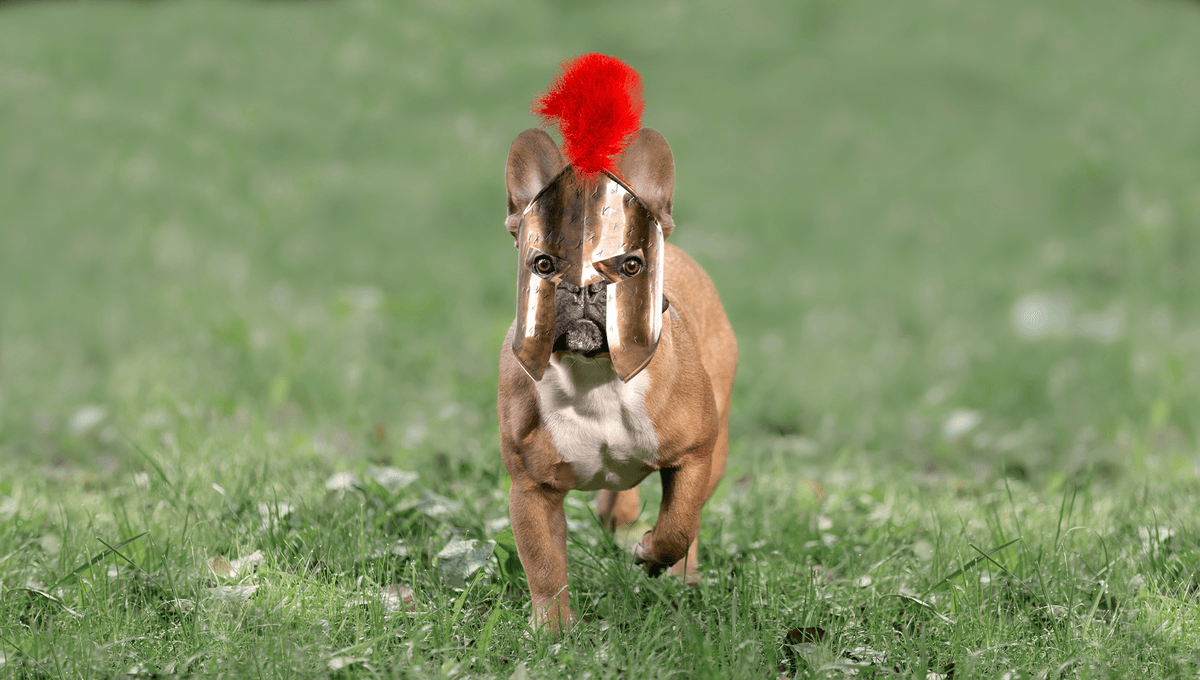
Pugs, boxers and chow chows may be all the rage these days, but a new discovery proves that the popularity of flat-faced dogs is far from a modern trend. Analyzing the remains of a canine skull at a Roman-era site in Türkiye, researchers have determined that the ancient pooch had a brachycephalic skull similar to that of a French Bulldog.
Brachycephalic dog breeds are those with shortened heads and are the product of artificial selection programs designed to produce pets with cute characteristics. Using radiocarbon dating, the study authors determined that the squishy-faced critter was between 1,942 and 2,118 years old, indicating that the Romans may have been the first to deliberately breed dogs with short noses.
The animal’s remains were found in a tomb in the ancient city of Tralleis, where it was probably buried along with its owner. Originally unearthed in 2007, the fragile nature of the old bones meant that they couldn’t be examined until 2021.
After comparing the dog’s craniometric measurements with those of modern-day boxers, French bulldogs, and Pekingese toy dogs, the researchers found that the specimen was most similar to a French bulldog and least like a boxer. “The Tralleis dog archaeozoological analysis proved that the mentioned specimen was a pet-like dog, resembling small dogs of the French Bulldog type,” they write in the study.
According to the researchers, brachycephalic dogs are not typically mentioned in Roman texts, nor are they depicted in mosaics or reliefs from the Roman period. However, one flat-faced dog skull – known simply as Subject J – has been identified among the ruins of Pompeii.
The new discovery is therefore the second example of a Roman-era brachycephalic dog and the first from the eastern part of the Empire. The researchers describe these two ancient lap dogs as “unique examples of a [breeding] practice that started in the Roman period and later entered the daily life.”
Despite the fact that most of the dog’s skeleton was missing, the study authors were able to determine that it was probably a male and somewhat small in stature. Based on the level of wear and tear evidenced by the animal’s teeth, they conclude that it was quite young when it died, having just reached adulthood.
Furthermore, they report that “the animal’s intentional deposition in [the tomb] during a human funeral ceremony indicated that the role of the Tralleis dog in human life could be important and its social position might be rather high.” This is further supported by the lack of skeletal or dental trauma typically seen in working dogs of the time.
“The dog’s life lacked brutality or even cruelty leaving visible signs on various parts of the skeleton, sometimes observed in canine skeletal remains, which further confirmed a higher social status of this animal,” they write.
“Maybe it was the best friend and companion of the deceased, who probably included in his last will the wish of a common burial.”
The study is published in The Journal of Archaeological Science: Reports.
Source Link: The Romans Bred Lap Dogs With Squished Faces Like French Bulldogs